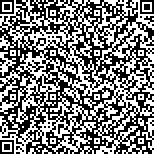Archive > Volume 46 Issue 9 > 2020,46(9):1189-1198. DOI:10.7519/j.issn.1000-0526.2020.09.006 Prev Next
Application Research of Dual-Polarization Radar in Quality Control of Automatic Rain Gauge
- Article
- Figures
- Metrics
- Preview PDF
- Reference
- Related
- Cited by
- Materials
Abstract:
In this paper, the dual-polarization weather radar data are used to improve the quality of the automatic rain gauge data. The quality of the rain gauge data is improved by using the inverse distance weighting method (IDW), and the rain guage data after quality control are used to correct the rainfall data derived from dual-polarization radar. The quality control method is determined by using the revised radar-gauge data, and the quality of gauge data is comprehensively controlled from the perspective of spatial consistency and observation consistency. The comprehensive quality control method is verified by using a typhoon precipitation process. The results show that there are some misjudgments in the spatial consistency of rain gauge observations by only using IDW method, mainly due to the abruptness of local precipitation, the inhomogeneity of rainfall structure and the sparse distribution of rain gauges. The misjudgments caused by the simple use of spatial consistent property control method can be effectively reduced by combining with polarization radar. The rainfall estimations of radar have been greatly improved after the rain gauge calibration and correction so that the effectiveness of the polarization radar used in the quality control of the rain gauge is improved. During typhoon rainfall, about 5% of the rain gauges per hour are considered as the error sites with wrong results. This comprehensive quality control method has some misjudgments when the distribution of the rain gauge is sparse or when the rain gauge lies in the edge of precipitation.
Keywords:
Project Supported:
Clc Number:


Mobile website









